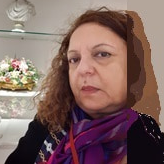2D Materials for Membrane Distillation
A special issue of Membranes (ISSN 2077-0375). This special issue belongs to the section "Membrane Analysis and Characterization".
Deadline for manuscript submissions: closed (30 November 2023) | Viewed by 2061
Special Issue Editors
Interests: 2D materials; nanostructures; quantum optics; electronic of few-particle states (excitons, electron-phonon, polarons, thermoplasmons) semi-magnetic nanostructures with spin states, entanglement) in quantum dots; quantum optic through organic-inorganic heterostructures and hybrid microcavities
Interests: polymeric membranes; mixed-matrix membranes; nanotechnologies; thermoplasmonics; molecular probes; active coatings; electrospinning; desalination; solar-driven membrane distillation; gradient salinity energy; zero liquid discharge; circular economy
Special Issues, Collections and Topics in MDPI journals
Special Issue Information
Dear Colleagues,
Membrane Distillation (MD) has emerged as a hybrid thermal/membrane technology having the potential to demineralize saltwater (included natural and anthropic brine) at recovery factors above the value of 50 % typical for Reverse Osmosis (RO).
The recent achievements in MD process optimization have opened the door for the commercialization of MD modules. However, hydrophobic microfiltration (MF) membranes are usually employed in MD applications; thus, there is a lack in terms of membranes specifically optimized for MD. Definitively, the development of membranes exclusively designed for MD characterized -especially characterized by poor wetting and fouling/scaling tendencies- is an imperative.
In recent years, the rapid growth of interest in fundamental studies and engineering of Two-dimensional (2D) materials suggests the realization of high-performance separation and distillation membranes. The unique atomic thickness of 2D materials stimulates the continued search for ultrathin and selective membranes for separation. Many different breakthroughs in recent decades have been accomplished towards the exfoliation and perforation of monolayers implementing pioneering nanosheet membranes for molecular separation. Different 2D materials including graphene, graphene oxide, MXenes, layered transition metal dichalcogenides (TMDs), layered zeolites, 2D metal organic, 2D covalent organic have been embedded into polymeric membranes exploited in MD process. When incorporated in polymeric membranes, 2D materials conferred to the membranes highly desirable properties for MD applications, such as facilitated water transport, enhancement of the salt rejection and long-term stability. Moreover, recent studies have demonstrated the opportunity to exploit 2D materials (i.e. graphene and tungsten disulfide) as photothermal filler in membranes enabling efficient light-to-heat conversion under the solar radiation exploitable to boost the performance and reduce the specific energy consumption of the process paving the way for the advent of photothermal MD.
This Special Issue entitled “2D Materials for Membrane Distillation" aims to gather the focal points of developments of novel membranes for MD process based on the employment of 2D materials.
Related topics include but are not limited to:
- Novel 2D materials in membrane preparation;
- New approaches in the embodiment of 2D materials in membranes;
- 2D materials in enhancement of the performance of MD process;
- New areas of application of membranes based on 2D materials.
Prof. Dr. Sihem Jaziri
Dr. Sergio Santoro
Guest Editors
Manuscript Submission Information
Manuscripts should be submitted online at www.mdpi.com by registering and logging in to this website. Once you are registered, click here to go to the submission form. Manuscripts can be submitted until the deadline. All submissions that pass pre-check are peer-reviewed. Accepted papers will be published continuously in the journal (as soon as accepted) and will be listed together on the special issue website. Research articles, review articles as well as short communications are invited. For planned papers, a title and short abstract (about 100 words) can be sent to the Editorial Office for announcement on this website.
Submitted manuscripts should not have been published previously, nor be under consideration for publication elsewhere (except conference proceedings papers). All manuscripts are thoroughly refereed through a single-blind peer-review process. A guide for authors and other relevant information for submission of manuscripts is available on the Instructions for Authors page. Membranes is an international peer-reviewed open access monthly journal published by MDPI.
Please visit the Instructions for Authors page before submitting a manuscript. The Article Processing Charge (APC) for publication in this open access journal is 2700 CHF (Swiss Francs). Submitted papers should be well formatted and use good English. Authors may use MDPI's English editing service prior to publication or during author revisions.







